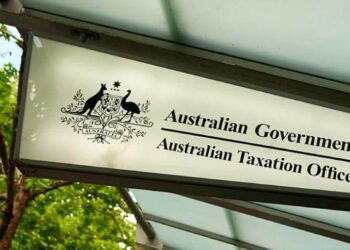Meg Heffron, managing director of Heffron, said while TSB has always been an important number when it comes to super contributions, if the legislation is passed it will become even more crucial.
“The proposal involves levying the new tax on an individual’s ‘earnings’ in super and these will be measured by the growth in their TSB,” Ms Heffron said.
“The argument is that if a member’s TSB has increased from $5 million to $5.5 million in a year when they’ve taken nothing out of super and haven’t added any new contributions, that $500,000 has come from ‘earnings’.
“The controversial aspect of course is that this particular earnings amount is made up of all sorts of things that wouldn’t normally be taxed. For example, it includes growth in the value of the fund’s underlying assets even though they haven’t been sold (so-called unrealised capital gains).”
She said that there will be a lot of people with large super balances who are about to take considerably more notice about exactly what goes into a TSB than they used to.
Ms Heffron explained there are three major ‘quirks’ that should now be considered.
The first involves balance in theory versus balance in practice.
“TSB on a particular day – let’s say 30 June – is technically ‘what you’d get if you withdrew all your super that day’. In an SMSF, that’s often not the same as the amount on your member statement,” she said.
In reality, she continued, the member statement is based on the fund’s financial statements which effectively treat the fund like a going concern.
In accordance with the accounting rules, it doesn’t allow for absolutely every cost that would be incurred if the fund did have to pay out all members’ benefits that day.
“For example, they don’t allow for the transaction costs of selling a major asset like a property, the costs associated with winding up the fund.”
While the financial statements can take into account the tax cost of selling everything at 30 June such as the capital gains tax that would be paid if all the assets were sold, she said they often don’t.
“That’s simply a practical thing – tax in an SMSF is highly influenced by exactly what’s happening with the members at a particular time and that can change quickly and often,” she added.
“For example, when SMSF members start retirement phase pensions, the fund stops paying tax on some of its investment income. For example, if 40 per cent of the fund is supporting retirement phase pensions, then 40 per cent of the fund’s investment income is exempt from tax and 40 per cent of any capital gains would be ignored if all the assets were sold.”
This means that the ‘correct’ allowance to make for capital gains tax in one year (before the pensions start) and the next (once they’re in place) could be very different and would change if one of the pension members died and going forward only 20 per cent of the fund was in pension phase.
For this reason, SMSF financial statements are often prepared ignoring this potential tax altogether and instead, it’s allowed for when it’s actually paid, such as when the assets are really sold.
In the future, it may be more desirable to make sure all these costs are allowed for to make TSB as low as possible, but it is also important to remember that the earnings amount for this tax is the change in TSB from one year to the next.
However, she said it won’t always be desirable to make TSB in a particular year as low as possible.
“What will often be more important is minimising the growth from one 30 June to the next. Paradoxically, that might mean continuing to ignore these extra costs and taxes or it might mean including them. It will be something to work out on a case-by-case basis,” she said.
The second quirk to be aware of is sudden increases in superannuation.
TSB is more complicated for someone who has inherited a spouse’s super and the most common way for this to happen is through a ‘reversionary pension’ where a member dies with a pension running and it automatically continues for their spouse.
This amount will be included in the spouse’s TSB immediately and often comes as a surprise because for other purposes the treatment of reversionary pensions is different.
“For example, let’s say Carl has an account-based pension worth $2 million in his SMSF in 2025/26. He dies on 1 May 2026 and the pension continues automatically to his wife Jane – the pension is ‘reversionary’.”
“Jane knows about the TSB which limits how much super she can put into a pension, and this will include the pension she’s just inherited from Carl. But the law specifically gives her a 12-month window here – she doesn’t have to worry about her own TSB until 1 May 2027.
“In contrast, Carl’s pension will be part of her TSB immediately for the $3 million tax, from 1 May 2026. That means that when the new tax is worked out on 30 June 2026, it will count towards the $3 million limit for her.
“Jane has always assumed the new tax wouldn’t apply to her as she only had $2 million in super herself, but now she’s inherited a new pension, she’s over the limit and she doesn’t have 12 months to think about it.”
Finally, Ms Heffron said the TSB calculation will be very much dependent on timing as one of the proposed rules is that it’s the TSB at the end of the year that will drive how much of the ‘earnings’ amount is taxed which could create strange outcomes.
“Let’s consider Tim, whose TSB was $9 million on 30 June 2025 and it grew to $10 million by 29 June 2026,” she said.
“At this stage, Tim hasn’t added any contributions or taken any withdrawals from his super so his earnings amount for the new tax is $1 million.
“If he does nothing, Tim is facing 15 per cent tax on 70 per cent of this $1 million in earnings.”
The calculation proposed at this stage is to tax the following proportion of Tim’s earnings:
TSB at the end of the year ($10m) – $3m
——————————————————-
TSB at the end of the year ($10m)
= 70 per cent (effectively, it’s the proportion of Tim’s TSB that is over $3m)
“That means a tax bill of $105,000.
“But what if Tim withdrew $6 million on 30 June 2026, leaving a TSB of only $4 million at 30 June 2026? His earnings amount would still be $1 million because the formula adjusts for withdrawals.
It would be calculated as:
($4m + $6m) – $9m = $1m
“Tim would have to ‘add back’ the $6 million withdrawal to his final TSB of $4 million. However, a much smaller proportion of Tim’s earnings would be taxed:
TSB at the end of the year ($4m) – $3m
——————————————————-
TSB at the end of the year ($4m)
= 25 per cent (effectively, it’s the proportion of Tim’s TSB that is over $3 million)
“Now his tax bill is only $37,500.”


